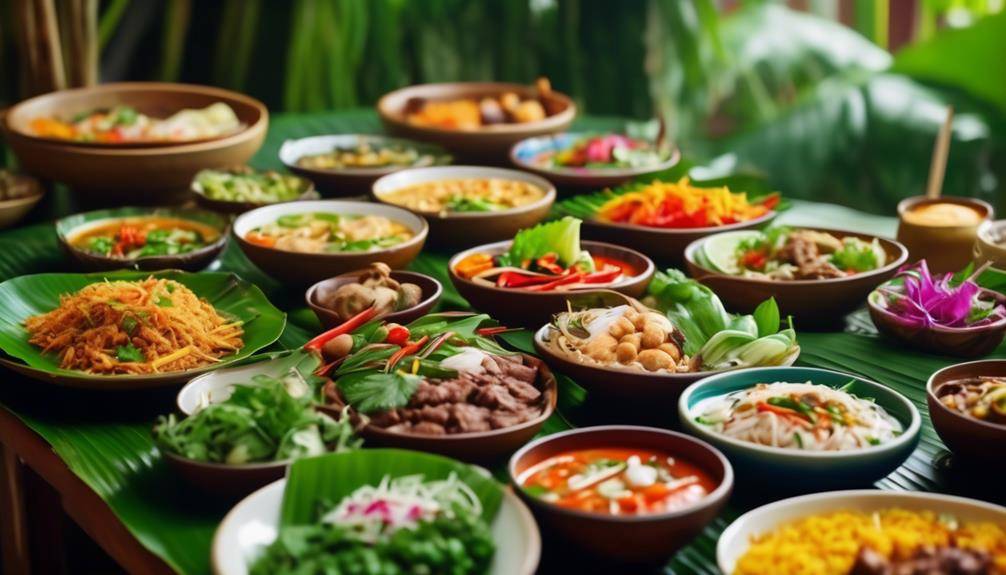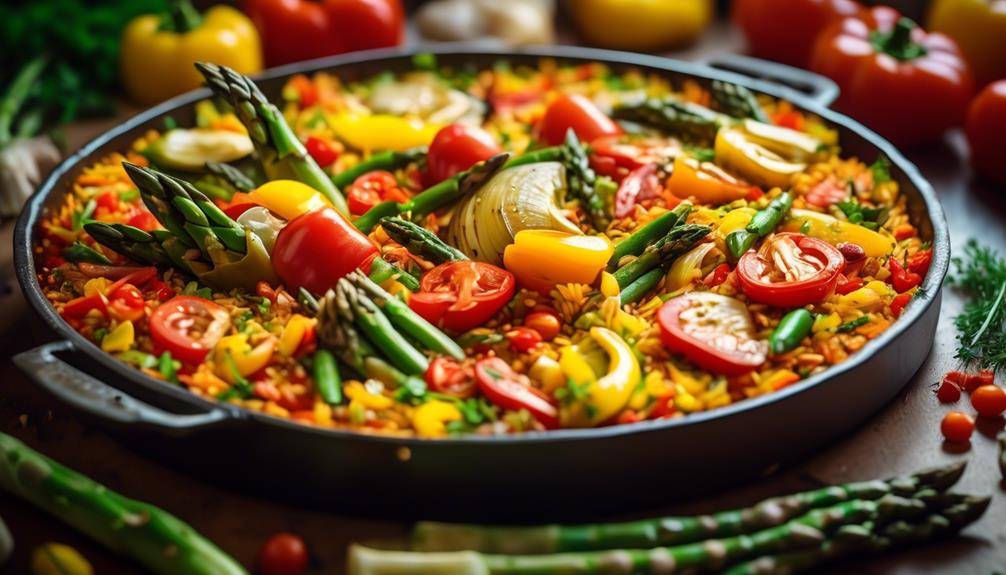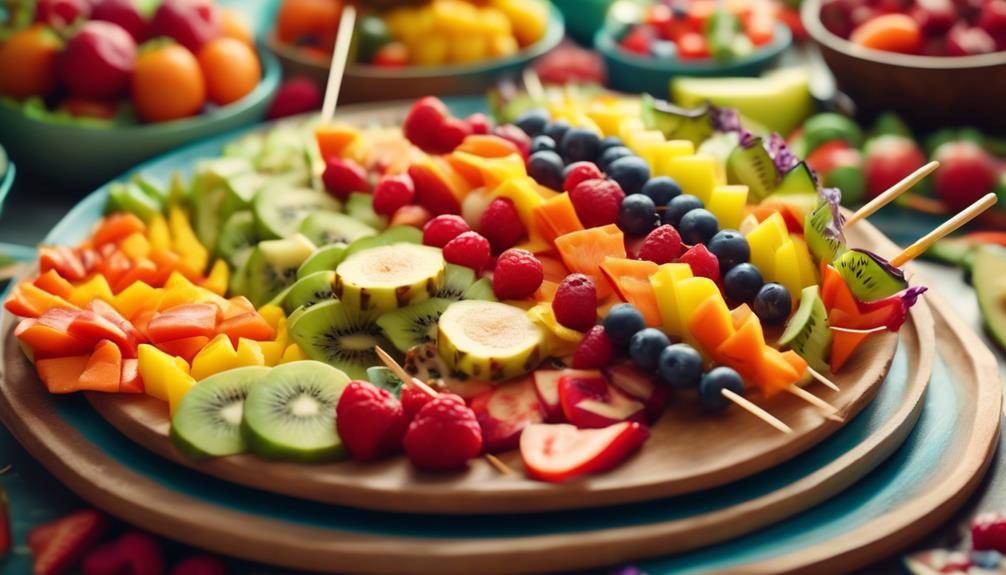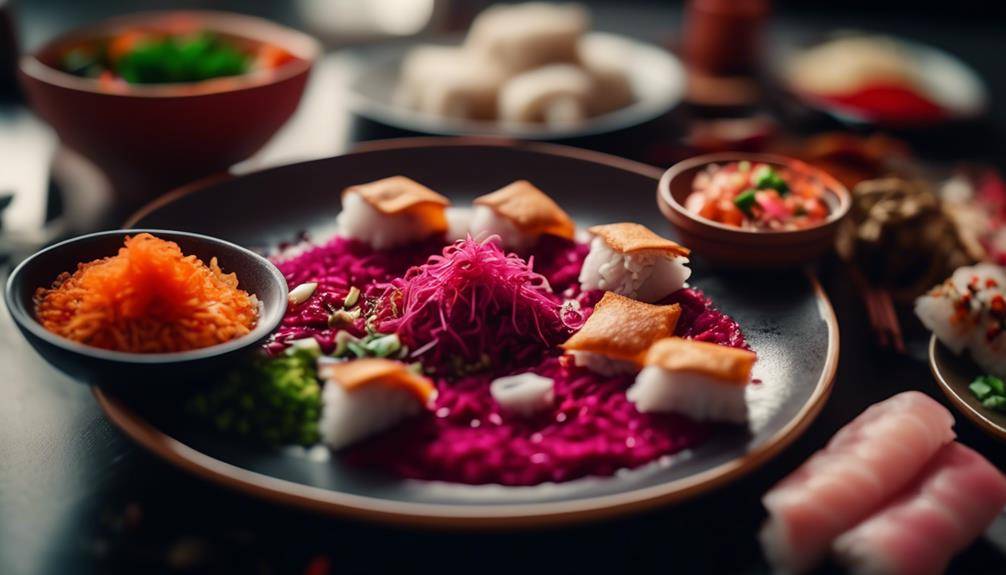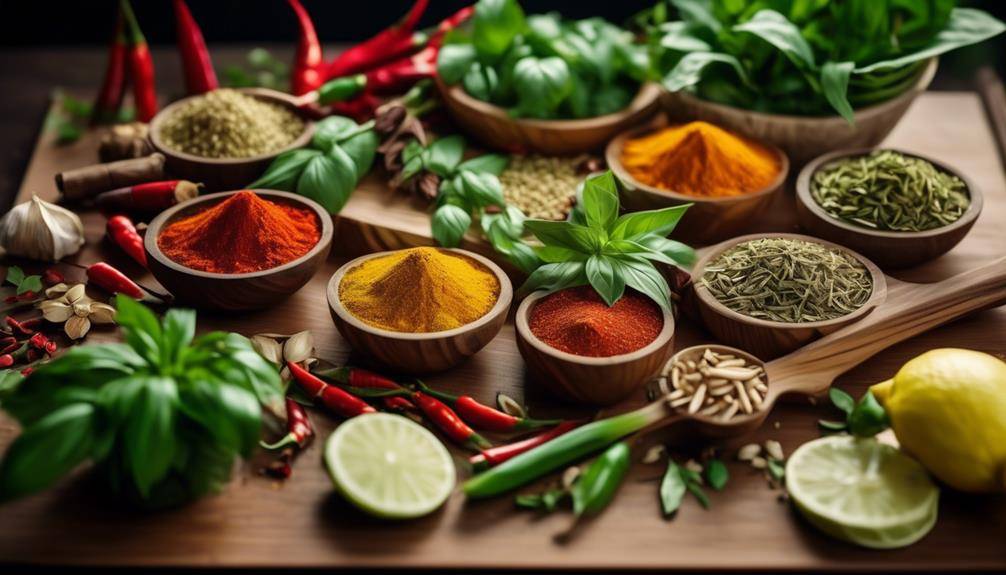Amazing Gluten-Free Diet for Beginners
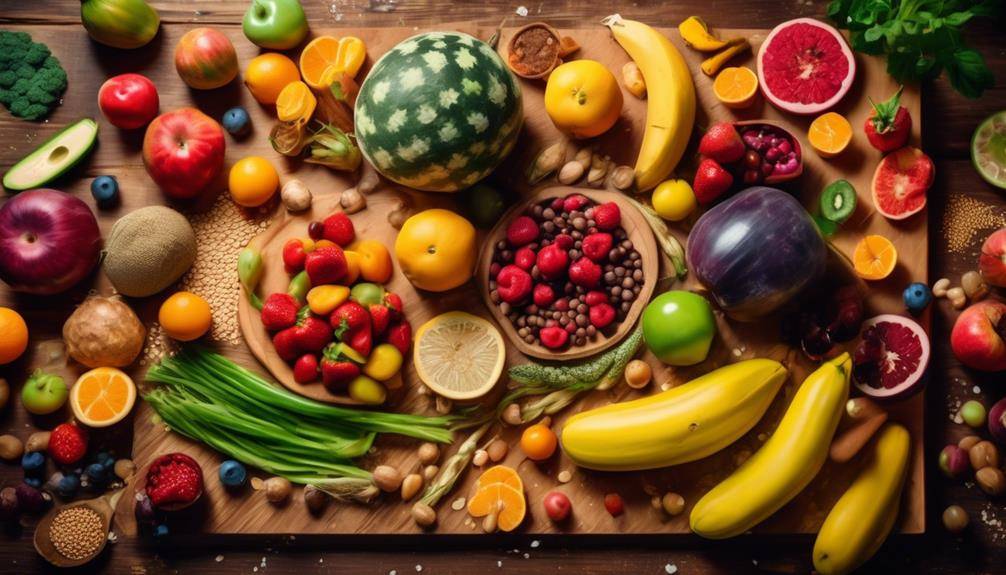
Amazing Gluten-Free Diet for Beginners; Are you tired of feeling bloated and sluggish after every meal, yet still unable to resist that warm, fluffy slice of bread? It’s time to take control of your diet and explore the world of gluten-free eating. But where do you begin? In this discussion, we will uncover the basics of a gluten-free diet, including what gluten is, the benefits it can bring, and the common foods to avoid. By the end, you’ll have a solid foundation to embark on your gluten-free journey and discover a whole new world of delicious, nutritious options that will leave you feeling lighter and more energized.
What Is Gluten?
Gluten is a protein commonly found in grains such as wheat, barley, and rye. It is responsible for the elastic texture of dough and is often used as a binding agent in many processed foods. However, for individuals with gluten allergies or sensitivities, consuming gluten can lead to a range of symptoms, including abdominal pain, bloating, diarrhea, and fatigue.
Understanding gluten allergies is essential for those who need to follow a gluten-free diet. Gluten allergies, also known as celiac disease, are an autoimmune disorder where the immune system mistakenly attacks the lining of the small intestine in response to gluten consumption. This can cause long-term damage to the small intestine and interfere with the absorption of nutrients.
If you or someone you know is following a gluten-free diet, it’s important to be aware of some helpful baking tips. Gluten-free baking can be challenging, as gluten plays a crucial role in providing structure and elasticity to baked goods. To compensate for the absence of gluten, it is important to use alternative flours such as rice flour, almond flour, or coconut flour. These flours can be combined with xanthan gum or psyllium husk to improve the texture and binding properties of the baked goods. Additionally, it is important to carefully read food labels, as gluten can be hidden in various ingredients such as modified food starch, malt, and hydrolyzed vegetable protein.
Understanding Celiac Disease
For individuals who need to follow a gluten-free diet due to gluten allergies or sensitivities, it is important to understand the autoimmune disorder known as celiac disease. Celiac disease is a chronic condition in which the body’s immune system reacts to gluten, a protein found in wheat, barley, and rye. When individuals with celiac disease consume gluten, it triggers an immune response that damages the lining of the small intestine. This can lead to various symptoms and long-term health complications.
One of the key aspects of understanding celiac disease is recognizing its symptoms. Common symptoms of celiac disease include diarrhea, abdominal pain, bloating, and weight loss. However, it is important to note that these symptoms can vary widely among individuals. Some may experience symptoms related to the digestive system, while others might have non-digestive symptoms such as fatigue, joint pain, or skin rashes. In some cases, individuals with celiac disease may not experience any noticeable symptoms at all, making diagnosis challenging.
To manage celiac disease, a gluten-free lifestyle is crucial. This means eliminating all sources of gluten from your diet, including bread, pasta, cereals, and baked goods. It is essential to read food labels carefully and be aware of hidden sources of gluten in processed foods, sauces, and condiments. Fortunately, there are now many gluten-free alternatives available, such as gluten-free bread, pasta, and flour, making it easier to adhere to a gluten-free diet.
Benefits of a Gluten-Free Diet
The adoption of a gluten-free diet can offer several potential benefits for individuals with celiac disease or gluten sensitivities. Going gluten-free can help alleviate symptoms, improve gut health, and promote overall well-being.
- Symptom relief: Cutting out gluten can provide relief from symptoms like abdominal pain, bloating, diarrhea, and constipation that individuals with celiac disease or gluten sensitivities often experience. By eliminating gluten, the immune response triggered by the consumption of gluten-containing foods is reduced, leading to a decrease in symptoms.
- Improved gut health: A gluten-free diet can help heal the gut lining, which may have been damaged by the inflammation caused by celiac disease or gluten sensitivities. By removing gluten, the gut can repair itself, allowing for better nutrient absorption and overall digestive health.
- Enhanced well-being: Many people report feeling more energized and experiencing an improved mood after adopting a gluten-free diet. While the exact reason for this is not fully understood, it is believed that reducing inflammation in the body by avoiding gluten can contribute to an overall sense of well-being.
In order to make the most of a gluten-free lifestyle, it is important to keep a few tips in mind. First, read food labels carefully to ensure that products are truly gluten-free. Look for gluten-free certifications or labels, and be aware of hidden sources of gluten. It is also helpful to focus on naturally gluten-free foods, such as fruits, vegetables, lean meats, and whole grains like rice and quinoa. Additionally, consider working with a registered dietitian who specializes in gluten-free diets to ensure you are meeting your nutritional needs while following a gluten-free lifestyle. By following these tips, you can reap the benefits of a gluten-free diet and improve your overall health and well-being.
Common Foods Containing Gluten
When following a gluten-free diet, it is important to be aware of common foods that contain gluten. Gluten can be found in grains such as wheat, barley, and rye, which are commonly used in bread, pasta, and baked goods. Additionally, gluten can often be hidden in processed foods and condiments, so it is crucial to read labels carefully and be mindful of hidden sources of gluten.
Gluten-Containing Grains
Gluten-containing grains, such as wheat, barley, and rye, are commonly found in a variety of foods. If you are following a gluten-free diet for weight loss or as an athlete, it is important to be aware of these grains and their sources. Here are three common foods that often contain gluten:
- Bread and baked goods: Many breads, pastries, and baked goods are made with wheat flour, which contains gluten. Be sure to check labels and opt for gluten-free alternatives.
- Pasta and noodles: Traditional pasta and noodles are typically made with wheat flour. Look for gluten-free options made from rice, corn, or quinoa.
- Cereals and granola: Some cereals and granola contain gluten as they are made with wheat, barley, or rye. Read the ingredient list carefully and choose gluten-free alternatives like gluten-free oats or rice cereals.
Hidden Sources of Gluten
Hidden sources of gluten can be found in a variety of common foods, making it important to be vigilant when following a gluten-free diet. Cross contamination risks and hidden gluten ingredients are key factors to consider. Cross contamination occurs when gluten-free foods come into contact with gluten-containing foods or surfaces, such as shared utensils or cooking surfaces. This can happen in restaurants, bakeries, or even at home if separate cooking areas are not maintained. Hidden gluten ingredients are often found in processed foods, such as sauces, dressings, and soups, as well as in unexpected places like medications and cosmetics.
Reading labels carefully and looking for gluten-free certifications can help identify hidden sources of gluten. Additionally, it is important to be aware of ingredients that are commonly derived from gluten-containing grains, such as malt, barley, and rye. Being aware of these hidden sources of gluten can help individuals with gluten sensitivities or celiac disease maintain a strict gluten-free diet.
Gluten-Free Grains and Alternatives
When following a gluten-free diet, it’s important to know the grain options that are safe to consume. There are several gluten-free grains available, such as rice, quinoa, corn, and millet, which can be used as alternatives to wheat. These grains provide essential nutrients and can be incorporated into various dishes to meet your dietary needs.
Gluten-Free Grain Options
To incorporate gluten-free grains and alternatives into your diet, there are a variety of nutritious options available. Here are three gluten-free grain options that you can easily incorporate into your meals:
- Quinoa: This versatile grain is high in protein and fiber, making it a great addition to salads, stir-fries, or even as a side dish.
- Brown rice: A staple in many gluten-free diets, brown rice is rich in nutrients and can be used as a base for grain bowls, alongside proteins, or in pilafs.
- Buckwheat: Despite its name, buckwheat is actually a seed and is gluten-free. It can be ground into flour for gluten-free baking alternatives or used as a base for porridge or pancakes.
Alternatives to Wheat
There are a variety of gluten-free grains and alternatives available as substitutes for wheat in your diet. These alternatives can be used in various recipes and are suitable for gluten-free baking. One popular option is rice flour, which has a mild flavor and can be easily incorporated into recipes. Another option is almond flour, which adds a nutty flavor and a moist texture to baked goods.
If you prefer a grain-like texture, you can try quinoa, which is not only gluten-free but also high in protein. Other wheat substitutes include tapioca flour, sorghum flour, and coconut flour. These alternatives provide a wide range of options for gluten-free baking and can help you enjoy a variety of delicious foods while following a gluten-free diet.
Reading Food Labels for Gluten
Reading food labels for gluten can be a crucial step in ensuring that you maintain a gluten-free diet. It is important to familiarize yourself with the information provided on food labels to avoid any cross contamination risks and make informed choices. Here are three key things to look for when reading food labels for gluten:
- Gluten-Free Certification: Look for products that have been certified as gluten-free by reputable organizations. These certifications ensure that the product has undergone rigorous testing and meets the necessary standards for a gluten-free diet. Look for logos or statements such as “Certified Gluten-Free” or “Gluten-Free Certification Program” on the packaging.
- Ingredients List: Carefully read the ingredients list to identify any potential sources of gluten. Common sources of gluten include wheat, barley, rye, and oats (unless they are specifically labeled as gluten-free). Be aware of less obvious sources of gluten such as malt, modified food starch, and hydrolyzed vegetable protein. If any of these ingredients are listed, it is likely that the product contains gluten.
- Allergen Labeling: Check for allergen labeling, which is required by law in many countries. Look for statements such as “Contains wheat” or “May contain traces of gluten.” This information can help you assess the risk of cross contamination and make informed decisions about whether to consume the product.
Dining Out on a Gluten-Free Diet
When dining out on a gluten-free diet, it is important to be knowledgeable about menu options and take necessary precautions to ensure a safe and enjoyable dining experience. Many restaurants now offer gluten-free menu options to cater to the increasing number of people following a gluten-free diet. These options are specifically designed to be free from gluten, a protein found in wheat, barley, and rye, which can cause adverse reactions in individuals with gluten intolerance or celiac disease.
To make the most informed choices when dining out, it is recommended to research the restaurant beforehand. Most establishments now have their menus available online, making it easier to identify gluten-free options. Look for restaurants that have a separate gluten-free menu or clearly mark gluten-free dishes on their regular menu. This helps to ensure that you have a variety of choices and are not limited to just a few items.
When ordering, it is essential to communicate your dietary needs to the server and ask about any potential cross-contamination risks. Cross-contamination can occur when gluten-free food comes into contact with surfaces or utensils that have been contaminated with gluten. It is important to ask if the restaurant has separate preparation areas, utensils, and fryers for gluten-free food. You can also inquire about the kitchen staff’s knowledge and training regarding gluten-free cooking practices.
Additionally, it can be helpful to ask about the ingredients used in the dishes you are interested in. Some sauces, dressings, and marinades may contain gluten, so it is important to inquire about these potential hidden sources. By being proactive and asking these questions, you can minimize the risk of consuming gluten and enjoy a worry-free dining experience.
Gluten-Free Recipes and Meal Ideas
One way to embrace a gluten-free diet is by exploring delicious gluten-free recipes and meal ideas. Going gluten-free doesn’t mean sacrificing taste or variety in your meals. There are plenty of options available that are both healthy and satisfying. Here are three gluten-free recipes and meal ideas to get you started:
- Quinoa Salad: Quinoa is a gluten-free grain that is packed with protein and nutrients. Combine cooked quinoa with your favorite vegetables, such as cherry tomatoes, cucumbers, and bell peppers. Add some fresh herbs like parsley or cilantro, and dress with lemon juice and olive oil for a refreshing and nutritious salad.
- Zucchini Noodles with Pesto: Replace traditional wheat pasta with zucchini noodles for a gluten-free alternative. Use a spiralizer or a vegetable peeler to make long, thin strands out of zucchini. Toss the zucchini noodles with homemade or store-bought gluten-free pesto sauce. Top with grated Parmesan cheese and toasted pine nuts for an easy and flavorful meal.
- Gluten-Free Banana Bread: For those with a sweet tooth, gluten-free baking can still be a treat. Try making a gluten-free banana bread using a combination of gluten-free flours like almond flour and oat flour. Add ripe bananas, eggs, and a touch of honey for natural sweetness. This moist and delicious bread will satisfy your cravings without the gluten.
When it comes to gluten-free snacks, there are plenty of options available. Choose naturally gluten-free snacks like fruits, vegetables, nuts, and seeds. You can also find gluten-free versions of popular snacks like potato chips, popcorn, and granola bars in most grocery stores. Just be sure to read labels carefully to ensure they are truly gluten-free.
Tips for a Successful Gluten-Free Transition
To successfully transition to a gluten-free diet, there are a few essential pantry swaps you’ll need to make. Stock up on gluten-free flours, such as almond or rice flour, as well as gluten-free pasta and bread alternatives. Additionally, dining out strategies are crucial for avoiding cross-contamination and ensuring a safe gluten-free meal. Be sure to communicate your dietary needs to restaurant staff and ask about gluten-free options and preparation methods.
Essential Pantry Swaps
Make essential pantry swaps to ensure a successful transition to a gluten-free diet. Here are three items you should consider incorporating into your pantry:
- Gluten-Free Flours: Replace regular all-purpose flour with gluten-free alternatives such as almond flour, coconut flour, or rice flour. These options can be used in a variety of recipes and provide a similar texture and taste.
- Gluten-Free Pasta: Swap traditional wheat-based pasta with gluten-free options made from quinoa, brown rice, or corn. These alternatives are just as delicious and can be easily found in most grocery stores.
- Gluten-Free Baking Mixes: Stock up on gluten-free baking mixes that are specifically designed to make your gluten-free baking experience easier. These mixes usually include a blend of gluten-free flours and other necessary ingredients, ensuring that your baked goods turn out just right.
Dining Out Strategies
If you’re looking to successfully navigate dining out while following a gluten-free diet, here are some strategies to keep in mind. Dining out can present challenges for those following a gluten-free diet, but with the increasing awareness of gluten intolerance and celiac disease, many restaurants now offer gluten-free menu options. Before dining out, it’s important to research and choose restaurants that cater to gluten-free diets. Look for establishments that have received positive reviews from gluten-free diners.
When you arrive at the restaurant, inform your server about your dietary restrictions and ask for a gluten-free menu or for guidance in selecting gluten-free options. Be vigilant about cross-contamination in the kitchen and ask questions about food preparation methods. It’s also helpful to bring a gluten-free dining card that outlines your dietary restrictions in the local language when traveling abroad. By taking these strategies into consideration, you can enjoy dining out while maintaining a gluten-free lifestyle.
Gluten-Free Resources and Support
Finding gluten-free resources and support can be invaluable when starting a gluten-free diet. Here are three helpful resources to consider:
- Gluten-Free Social Events: Attending gluten-free social events can provide a sense of community and support. These events often feature gluten-free food vendors, cooking demonstrations, and educational sessions. It’s a great opportunity to meet others who are also following a gluten-free lifestyle and learn from their experiences. Check local community centers, health food stores, and online event directories for upcoming gluten-free social events in your area.
- Online Gluten-Free Communities: Joining online gluten-free communities can be a great way to connect with others who are on a gluten-free diet. These communities offer a platform to ask questions, share recipes, and find support from people who understand the challenges and triumphs of living gluten-free. You can find online communities on social media platforms, forums, and dedicated websites. Some popular options include gluten-free Facebook groups, Reddit communities, and gluten-free blogging networks.
- Gluten-Free Support Groups: Joining a local gluten-free support group can provide you with a network of people who can offer guidance and encouragement. These groups often hold regular meetings where you can share experiences, exchange tips, and learn about new gluten-free products and resources. Support groups may also organize educational events, guest speakers, and cooking classes. To find a support group near you, check with local hospitals, health clinics, or celiac disease organizations.
Frequently Asked Questions: Amazing Gluten-Free Diet for Beginners
Are There Any Hidden Sources of Gluten That I Should Be Aware Of?
When following a gluten-free diet, it’s important to be aware of hidden sources of gluten. Cross contamination can occur in shared kitchen utensils or cooking surfaces, so it’s crucial to thoroughly clean and separate gluten-containing and gluten-free foods.
Can a Gluten-Free Diet Help With Weight Loss?
A gluten-free diet may help with weight loss by reducing overall calorie intake and improving digestive issues. However, it’s important to focus on overall health rather than just weight loss when considering a gluten-free diet.
Can I Still Enjoy Desserts and Baked Goods on a Gluten-Free Diet?
Yes, you can still enjoy delicious desserts and baked goods on a gluten-free diet. There are plenty of dessert alternatives and gluten-free baking tips available to help you satisfy your sweet tooth.
Is It Necessary to Completely Eliminate Gluten From My Diet, or Can I Have Small Amounts Occasionally?
You can have small amounts of gluten occasionally in a gluten-free diet, but it is generally recommended to eliminate it completely. There are plenty of gluten-free alternatives for desserts and baked goods available.
How Can I Ensure That I Am Getting All the Necessary Nutrients on a Gluten-Free Diet?
To ensure you get all necessary nutrients on a gluten-free diet, focus on a variety of whole foods like fruits, vegetables, lean proteins, and gluten-free grains. Proper meal planning and consulting with a registered dietitian can also help prevent nutrient deficiencies.
Conclusion
In conclusion, adopting a gluten-free diet can be beneficial for individuals with celiac disease or gluten sensitivity. By eliminating gluten-containing foods and opting for gluten-free grains and alternatives, individuals can maintain a healthy and balanced diet. It is important to be mindful of hidden sources of gluten and to seek support and resources when transitioning to a gluten-free lifestyle. With proper knowledge and planning, it is possible to successfully navigate a gluten-free diet and enjoy a variety of delicious and nutritious meals.



